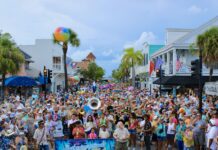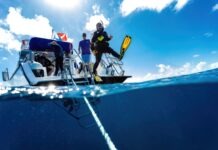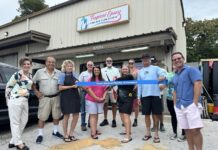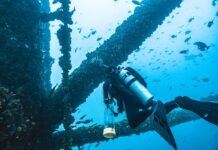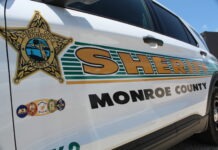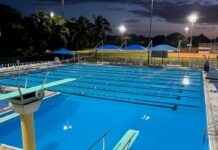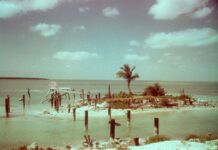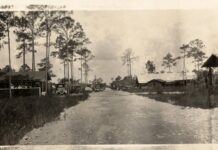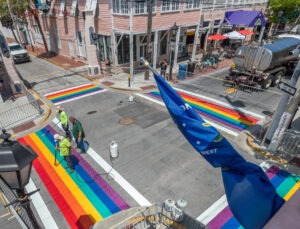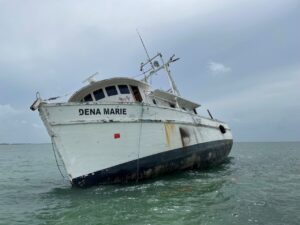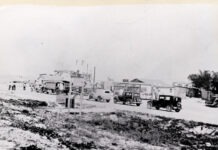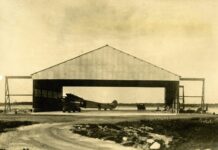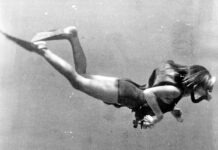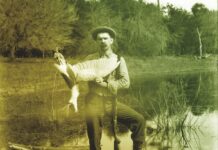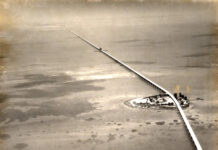In November 1932, Franklin Delano Roosevelt was elected for the first of his four terms as president. Roosevelt inherited the Great Depression. One of his first acts was implementing the New Deal, promising relief, recovery and reform. Part of his plan was to create the Federal Emergency Relief Administration (FERA), approved by Congress on May 12, 1933. FERA was allocated $500 million. The agency’s purpose was to grant relief funds directly to state agencies, with half of the money to be used for matching grants programs and half disbursed as discretionary funds.
Florida’s first FERA administrator was Julius Stone. Stone graduated from Harvard University in 1926 and had an affinity for Key West, where he opened an office. The city was in trouble. Like Florida and Monroe County, it was bankrupt. At one point, Key West was so poor it could no longer afford to pay for police, fire or sanitation services. Government officials discussed moving everyone off the island.
Or an attempt could be made to breathe new life into the Southernmost City. Living there, Stone understood that while Flagler’s railroad brought the train to Key West, it was not bringing much of a tourist trade. Stone was convinced that, with a little help, Key West could become an island oasis for tourists.
Stone organized the residents into a volunteer corps responsible for beautifying the town. Two hundred homes were refurbished so that rooms could be rented to visitors. Some of the primary streets were landscaped, and the beaches were spruced up. Stone also understood that the Overseas Highway that opened in 1928, version 1.0, did not provide a convenient conduit between Key West and the mainland. Because it was incomplete and required an automobile ferry system to bridge a 40-mile gap in the highway, it was time-consuming, too. Also, when attempting to make the trek between the ferry terminals during less than ideal weather conditions, the ferries were unreliable.
However, if there was a solid bridge system that eradicated the need for the ferries, Stone was sure the flow of traffic to Key West would increase — as would the island’s fortunes. Based on Stone’s suggestion, in 1934, hundreds of World War I veterans arrived in the Upper Keys to work on bridge projects that would make the ferries obsolete. Three work camps housed the workers, one on Windley Key and two on Lower Matecumbe Key. Each camp was capable of housing 250 men. The first bridge project would have connected Lower Matecumbe Key to the island called Jewfish Bush Key then — Fiesta Key today.
On Sept. 2, 1935, a Category 5 hurricane raged over the Upper Keys. To this day, it registers as the most powerful storm ever to strike North America. The eye of the storm crossed over Lower Matecumbe and Long keys with sustained winds in excess of 180 mph and a tidal surge of 17 feet. Hundreds of lives were lost in the Keys, including more than 200 veterans brought to the Keys to build automobile bridges.
What does 17 feet tall look like? The obelisk of the Florida Keys Memorial at Mile Marker 82, the hurricane monument erected to honor the hundreds of people who lost their lives in the storm, is roughly the height of the wall of water that came crashing over the islands that day.
The 1935 Labor Day Hurricane also brought an end to Henry Flagler’s Over-Sea Railroad. While the bridges Flagler’s crews had constructed weathered the storm relatively intact, 40 miles of railroad track was destroyed. The train to Key West had seen its last day.
Without diving into the failures of Flagler’s railroad, the Florida East Coast Railway sold the right-of-way of the Key West Extension to the state of Florida for $640,000.
Additionally, in 1937, the Public Works Commission approved a $3.6 million loan to convert the standing railroad bridges into automobile bridges. The newly refurbished Overseas Highway, version 2.0, opened to traffic on March 29, 1938, as a complete conduit that crossed the Seven Mile Bridge and directly connected Key West to the mainland. The official celebrated opening was July 4, 1938. Greyhound bus service between Miami and Key West also became operational.
A toll system was established to recoup costs associated with the improvements. Two toll booths were erected, one at Lower Matecumbe and one at Big Pine. The toll was $1 for drivers and an additional quarter for each passenger. Today, when driving along the Overseas Highway and over the Channel 2 Bridge between Lower Matecumbe and Craig Key, on the bayside of the highway, out in the water, are eight concrete structures that are sometimes referred to by locals as “The Coffins.” These are the bridge piers that were under construction when the Category 5 Labor Day Hurricane struck.
It would not be until 1944 that the Overseas Highway 3.0, the one that most resembles the road used today, would open, but that story is for next week.

